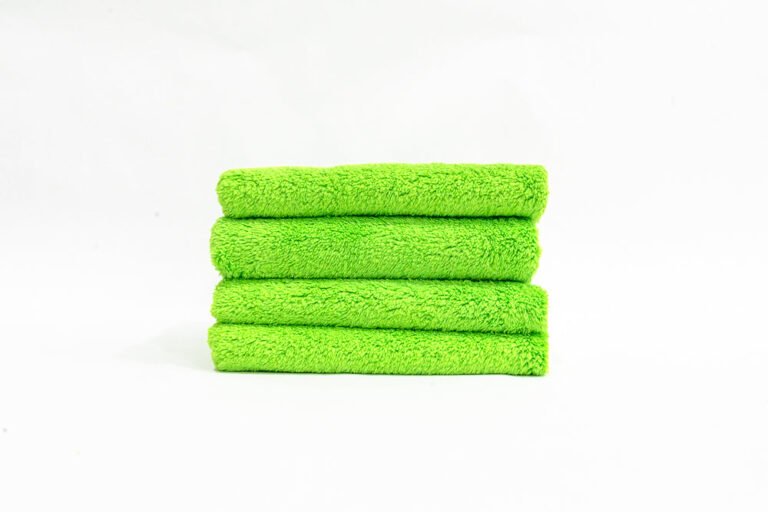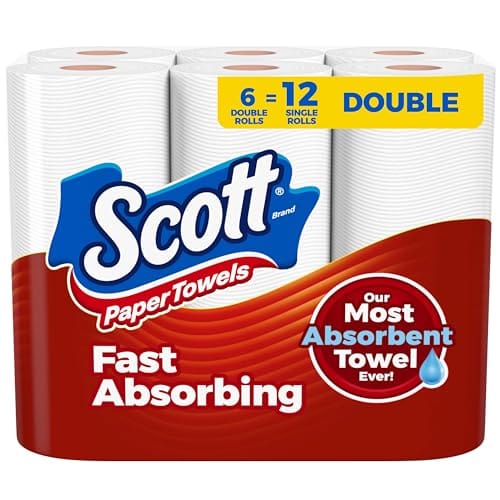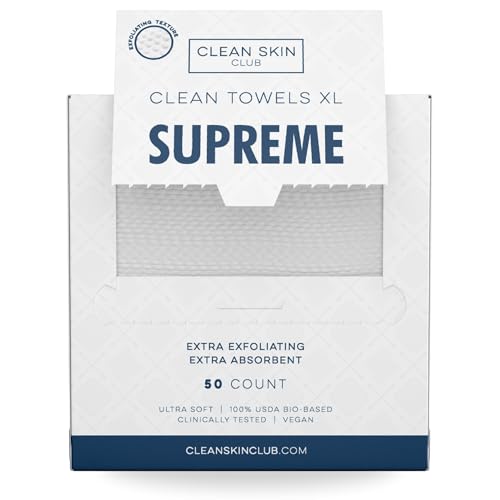To clean microfiber towels, wash them separately in warm water using a mild detergent. Avoid fabric softeners and bleach.
- Introduction To Microfiber Towels
- The Science Behind Microfiber Material
- Preparation For Cleaning Microfiber Towels
- Washing Microfiber Towels
- Drying Microfiber Towels
- Maintaining Microfiber Towel Quality
- Common Mistakes To Avoid
- Reviving Old Microfiber Towels
- Eco-friendly Tips For Microfiber Towel Care
- Frequently Asked Questions
- Conclusion
Microfiber towels are highly effective for cleaning due to their unique fabric structure. They trap dust, dirt, and grime more efficiently than traditional cloths. Proper care and cleaning of these towels ensure their longevity and effectiveness. Regular washing removes accumulated debris and keeps the fibers intact.
Use a gentle cycle in your washing machine and select warm water. Avoid using bleach or fabric softeners, as these can damage the microfiber material. Dry the towels on a low heat setting or air-dry them to prevent any shrinkage or damage. Following these steps will maintain the quality and performance of your microfiber towels.
Introduction To Microfiber Towels
Microfiber towels are incredibly popular for cleaning. They are made from fine synthetic fibers. These fibers are usually a blend of polyester and polyamide. Microfiber towels are soft, durable, and highly absorbent. They attract dirt, dust, and moisture better than regular cloths. This makes them an excellent choice for various cleaning tasks.
Why Choose Microfiber?
Microfiber towels offer many benefits. Here are some reasons to choose them:
- Superior Absorption: Microfiber towels can hold up to seven times their weight in water.
- Gentle on Surfaces: They are soft and non-abrasive.
- Effective Cleaning: Microfiber towels trap dirt and bacteria.
- Reusable: They are durable and can be washed many times.
- Eco-friendly: Reduce the need for chemical cleaners with microfiber towels.
Common Uses In Daily Life
Microfiber towels are versatile. Here are some common uses:
- Cleaning Windows: They leave no streaks behind.
- Dusting Furniture: Microfiber attracts dust like a magnet.
- Car Care: Perfect for washing and drying cars.
- Kitchen Cleaning: Wipe countertops and appliances with ease.
- Bathroom Cleaning: Use them on sinks, showers, and mirrors.
Table: Benefits Of Microfiber Towels
| Benefit | Description |
|---|---|
| High Absorption | Holds up to seven times its weight in water |
| Gentle on Surfaces | Soft and non-abrasive to surfaces |
| Effective Cleaning | Traps dirt and bacteria effectively |
| Reusable | Can be washed and reused many times |
| Eco-friendly | Reduces the need for chemical cleaners |
The Science Behind Microfiber Material
Microfiber towels are essential for cleaning. They excel in absorbing liquids and trapping dirt. Understanding the science behind microfiber helps in maintaining them.
Composition And Properties
Microfiber is made from synthetic materials. These materials are usually polyester and polyamide. The fibers are incredibly small. They are finer than a human hair.
| Material | Properties |
|---|---|
| Polyester | Strong and durable |
| Polyamide | Soft and absorbent |
Each fiber has a unique structure. This structure increases the surface area. It allows the towel to absorb more.
Absorbency And Durability
Microfiber towels are highly absorbent. They can hold up to seven times their weight in water. This makes them ideal for cleaning spills.
- High absorbency
- Quick-drying
- Long-lasting
The durability of microfiber is impressive. The fibers are woven tightly. This tight weave makes them strong. They can withstand many washes without losing effectiveness.
Microfiber’s durability and absorbency make it a favorite. It is used in households and industries worldwide.
Preparation For Cleaning Microfiber Towels
Microfiber towels are great for cleaning. They trap dirt and dust well. Proper cleaning extends their life. Preparation is key. Follow these steps for best results.
Separating Towels By Use
Separate your towels. Group them by their use. It prevents cross-contamination.
- Car cleaning towels: Keep these separate. They may have oil or chemicals.
- Kitchen towels: These might have food stains.
- Bathroom towels: These can have soap residue.
Use a separate laundry bag for each group. It helps keep them organized.
Pre-treatment Of Stains
Check each towel for stains. Pre-treat them before washing. Use a mild detergent or vinegar solution.
| Type of Stain | Pre-treatment Solution |
|---|---|
| Oil or grease | Dish soap and warm water |
| Food stains | Baking soda paste |
| Soap residue | White vinegar |
Apply the solution to the stain. Let it sit for 15 minutes. Then, rinse with cold water.
Washing Microfiber Towels
Cleaning microfiber towels properly ensures their longevity and effectiveness. Follow these steps to keep your towels in top condition.
Choosing The Right Detergent
Use a detergent that is free from fabric softeners and bleach. These chemicals can damage the microfiber. Opt for a mild, liquid detergent. Avoid powdered detergents as they may leave residue.
Machine Vs. Hand Washing
Both methods are effective for cleaning microfiber towels. Here’s a guide to help you choose the best method:
| Method | Pros | Cons |
|---|---|---|
| Machine Washing |
|
|
| Hand Washing |
|
|
Water Temperature Guidelines
Use warm water, not hot water. Hot water can damage the microfiber material. Warm water helps remove dirt and oil effectively.
For hand washing, fill a basin with warm water. For machine washing, set the washer to a warm setting.
Drying Microfiber Towels
Properly drying microfiber towels is crucial to maintain their effectiveness. Using the wrong method can damage the fibers. Let’s explore the best ways to dry your microfiber towels and avoid common mistakes.
Air Drying Versus Machine
Air drying is a gentle method for drying microfiber towels. Hang them on a clothesline or drying rack. Ensure they are spread out to allow air circulation. This method prevents damage and extends towel life.
Machine drying can be faster but requires caution. Use a low heat setting to avoid damaging the fibers. Overheating can cause the towels to lose their softness and absorbency. Place the towels in the dryer and set it to tumble dry low.
Avoiding Heat Damage
Heat can ruin microfiber towels. High temperatures can melt the fibers. Always use low heat settings if using a dryer. Avoid ironing microfiber towels as well. The heat from the iron can cause permanent damage.
| Drying Method | Benefits | Precautions |
|---|---|---|
| Air Drying | Gentle, preserves fibers | Ensure proper air circulation |
| Machine Drying | Faster, convenient | Use low heat setting |
Dry microfiber towels properly to keep them effective and long-lasting. Choose the method that suits your needs but always avoid excessive heat.

Maintaining Microfiber Towel Quality
Microfiber towels are essential for cleaning tasks. Keeping them in top condition is important. This ensures their longevity and effectiveness. Follow these simple steps to maintain their quality.
Frequency Of Washing
Wash your microfiber towels after every use. This prevents dirt build-up. Washing them frequently keeps them fresh and effective.
- Use warm water for washing.
- Avoid using fabric softeners.
- Use a mild detergent.
- Rinse thoroughly to remove soap residue.
Overwashing can wear them out. Stick to a regular washing schedule for best results.
Storage Solutions
Proper storage is key to maintaining microfiber towel quality. Store them in a cool, dry place.
- Fold towels neatly.
- Keep them in a clean, dry drawer or cabinet.
- Avoid storing them in damp places.
Store them separately from other cleaning tools. This prevents contamination and keeps them ready for use.
| Do’s | Don’ts |
|---|---|
| Wash in warm water | Use fabric softeners |
| Use mild detergent | Store in damp places |
| Fold neatly | Mix with other cleaning tools |
Maintaining microfiber towel quality ensures their long-lasting effectiveness. Follow these tips for best results.
Common Mistakes To Avoid
Microfiber towels are fantastic for cleaning due to their softness and efficiency. However, many people make mistakes that reduce their effectiveness and lifespan. Knowing these common mistakes to avoid will help keep your towels in top condition.
Using Fabric Softeners
One common mistake is using fabric softeners with microfiber towels. Fabric softeners coat the fibers, reducing their absorbency. This makes the towels less effective for cleaning. Always avoid fabric softeners to keep your towels working well.
Mixing Towels With Other Laundry
Another mistake is mixing microfiber towels with other laundry items. Mixing them with lint-producing fabrics like cotton can clog the fibers. This reduces their ability to clean effectively. Wash microfiber towels separately to maintain their performance.
| Common Mistake | Why It’s a Problem | How to Avoid |
|---|---|---|
| Using Fabric Softeners | Reduces absorbency | Avoid using softeners |
| Mixing Towels with Other Laundry | Clogs fibers with lint | Wash separately |
Follow these tips to keep your microfiber towels in great shape. This will ensure they remain effective for cleaning tasks.

Reviving Old Microfiber Towels
Microfiber towels can lose their effectiveness over time. They may become less absorbent and less soft. Here are some tips to revive old microfiber towels and make them like new again.
Stripping Build-up
Microfiber towels often accumulate build-up from detergents and fabric softeners. This build-up reduces their effectiveness. Stripping the towels can remove this build-up.
- Fill a bucket with hot water.
- Add 1 cup of vinegar and 1/2 cup of baking soda.
- Soak the towels in this solution for an hour.
- After soaking, wash the towels in a washing machine with hot water.
- Use a gentle detergent without fabric softener.
This process will strip away the build-up. Your towels will regain their absorbency and softness.
Restoring Softness And Absorbency
After stripping the towels, it’s essential to restore their softness and absorbency.
- Use white vinegar as a fabric softener.
- Add 1/4 cup of white vinegar to the rinse cycle.
- Dry the towels on low heat or air dry them.
Following these steps will help your microfiber towels stay soft and absorbent.
Here’s a summary in a table format:
| Step | Action |
|---|---|
| 1 | Fill a bucket with hot water |
| 2 | Add vinegar and baking soda |
| 3 | Soak towels for an hour |
| 4 | Wash with hot water and gentle detergent |
| 5 | Add vinegar to rinse cycle |
| 6 | Dry on low heat or air dry |
Following these steps ensures your microfiber towels remain in top condition. They will be soft, absorbent, and ready to use.
Eco-friendly Tips For Microfiber Towel Care
Microfiber towels are great for cleaning. They are reusable and durable. But, they need special care to stay effective. Here are some eco-friendly tips to care for them.
Biodegradable Detergents
Using biodegradable detergents is better for the environment. These detergents break down easily and do not harm nature. Check the label for eco-friendly ingredients. Avoid detergents with bleach or fabric softeners. These can damage your towels.
| Detergent Type | Benefits |
|---|---|
| Biodegradable | Safe for the environment |
| Non-Biodegradable | Can harm nature |
Water Conservation Techniques
Conserve water while washing your microfiber towels. Use a high-efficiency washing machine. These machines use less water and energy. Wash towels in cold water. This saves energy and keeps the towels in good shape.
- Wash full loads to save water.
- Rinse towels well to remove all soap.
- Air dry towels to save energy.

Frequently Asked Questions
How Often Should I Clean Microfiber Towels?
Clean microfiber towels after every use. This prevents dirt buildup and maintains their effectiveness. Regular washing ensures they stay soft and absorbent.
Can I Use Bleach On Microfiber Towels?
No, avoid using bleach on microfiber towels. Bleach can damage the fibers and reduce their absorbency. Use mild detergent instead.
What’s The Best Detergent For Microfiber Towels?
Use a mild, fragrance-free detergent. Avoid fabric softeners and harsh chemicals. These can degrade the microfiber and reduce its cleaning efficiency.
Should I Air Dry Microfiber Towels?
Yes, air drying is recommended. High heat from dryers can damage the fibers. If using a dryer, choose a low heat setting.
Conclusion
Cleaning microfiber towels is simple with proper care. Follow these steps to maintain their effectiveness and longevity. Regularly washing and drying them correctly ensures they remain in top condition. Always avoid fabric softeners and high heat. By taking these precautions, your microfiber towels will stay clean and perform well for years.



